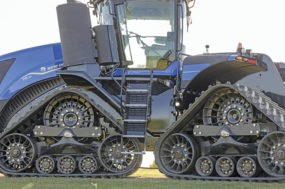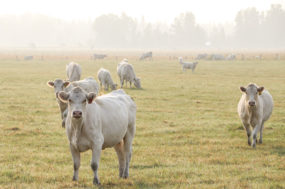Annual costs such as repairs, insurance and property taxes are part of the spreadsheet, as are estimated labor costs for storing and feeding the hay. And, the estimated value of spoilage losses under each system is considered.
“Users will need to enter the expected volume of hay to be produced or that’s needed, current hay prices and the size of bales they use,” Edwards said. “For each method, a total annual cost is calculated, which includes spoilage losses and the tons of hay available to feed or sell.”
The Excel-based spreadsheet “Hay Storage Cost Comparison" is available for viewing and download on the ADM website at www.extension.iastate.edu/agdm/crops/xls/a1-15haystoragecost.xls.
--From Iowa State University Extension news release
Forage Storage
Which hay storage option is best for you?
Several types of cost are considered in the analysis, he said. Initial investments in storage structure, tarps, gravel and pallets are amortized over their individual expected lives.
BUYER'S GUIDE
VISIT OUR BUYER’S GUIDEAgri-King believes capturing the nutritional value in feeds is the key to profit. With full nutrition programs, precise feed analysis, individualized rations and personalized on-farm service, Agri-King is committed to advancing the agricultural in...
Corner View Farm Equipment is your trusted partner for pre-owned forage harvesting equipment. Corner View Farm Equipment combines hands-on experience and technical expertise to pair farmers and custom harvesters with top quality pre-owned equipment.
-
LATEST NEWS
-
-
-
-
Forage Market Insights: The final straw of 2023
April 12, 2024
-









